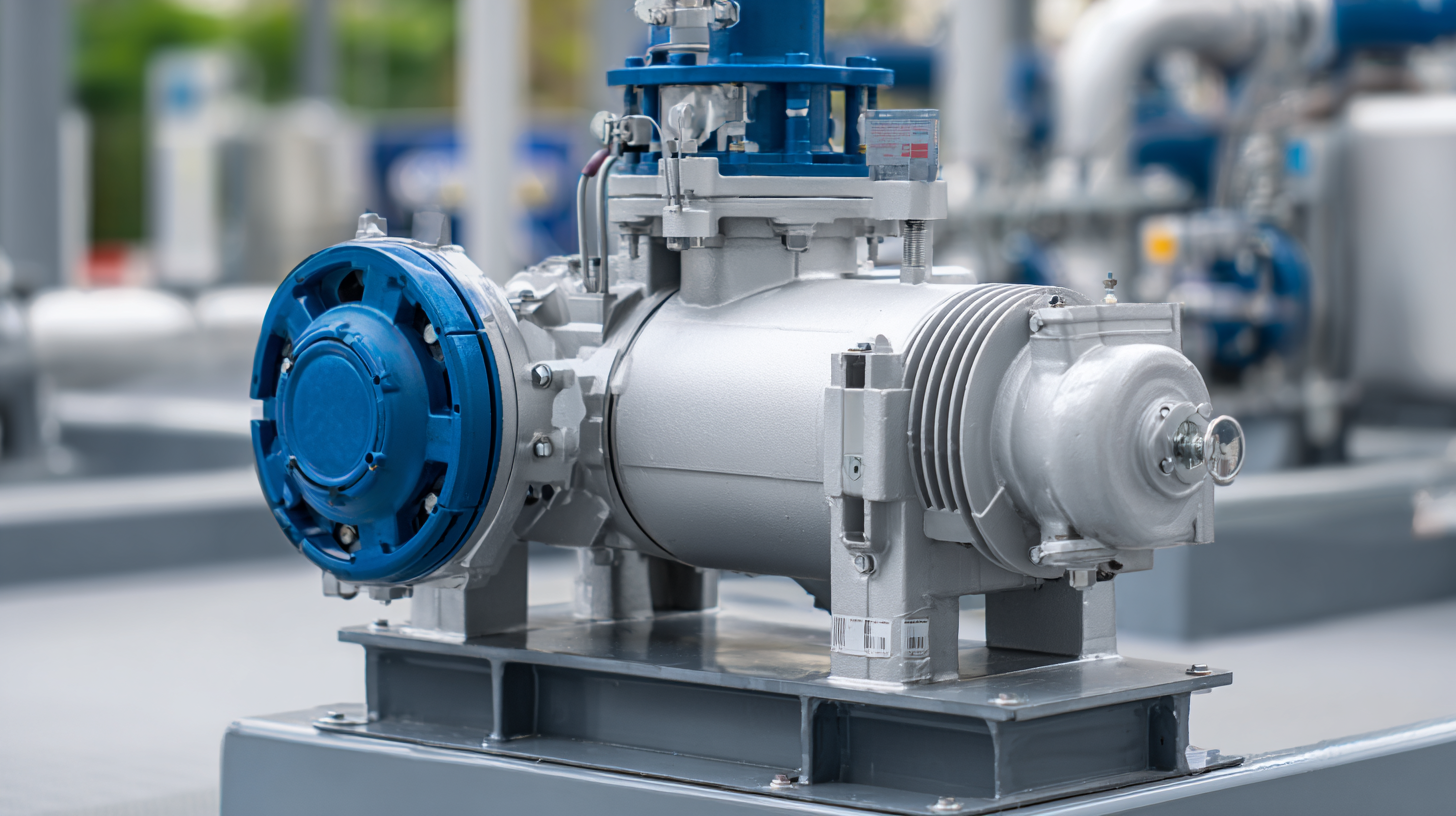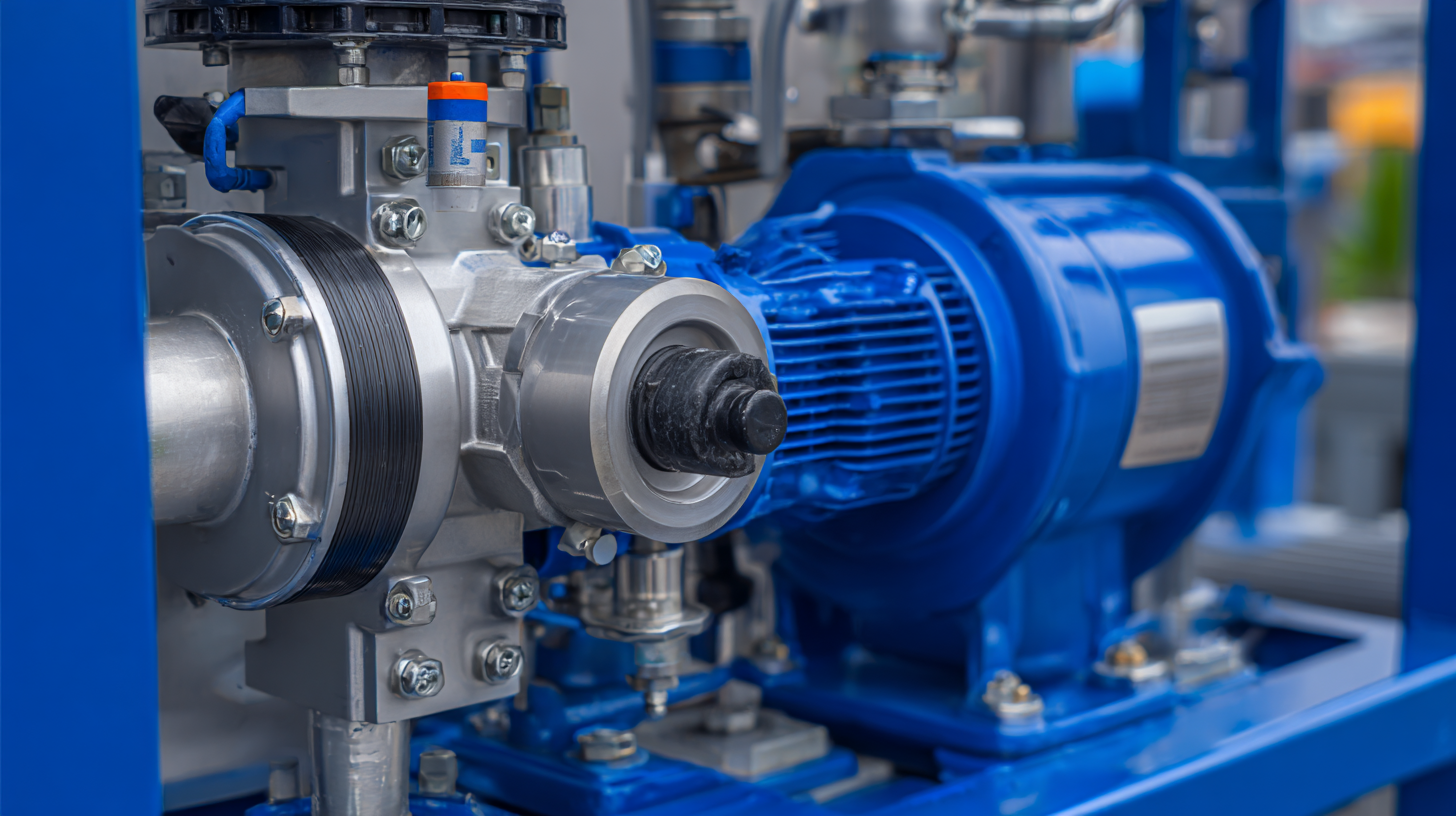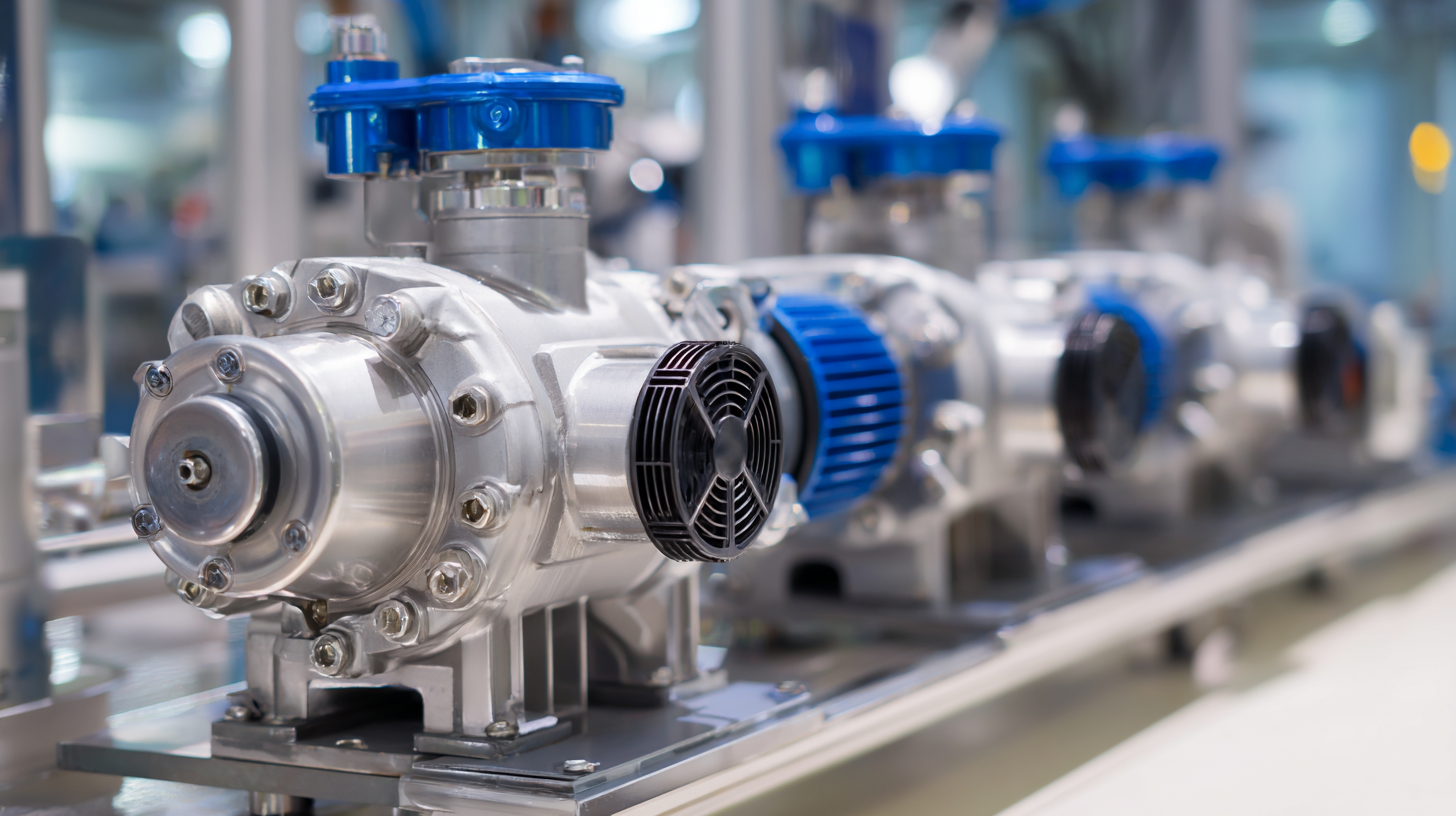
Universal Pumping | High Pressure Pumps
High Pressure Pumps for Difficult to Pump Slurry, Sludge, and Food Waste.
In the realm of fluid transfer technologies, diaphragm transfer pumps have gained substantial recognition for their versatility and efficiency. According to a report by Global Market Insights, the diaphragm pump market was valued at over $6 billion in 2021 and is projected to witness a significant growth rate through the next decade, driven by the increasing demand for reliable fluid handling solutions across various industries, including chemical, food and beverage, and water treatment. This growth highlights the critical importance of understanding the key features of diaphragm transfer pumps, which are designed to provide consistent and reliable performance in challenging environments. In this blog post, we will explore the seven best features of diaphragm transfer pumps that every user should be aware of to make informed decisions that ensure optimal performance and efficiency.

Diaphragm transfer pumps are essential tools in various industries due to their unique operational capabilities. At the heart of their functionality is a diaphragm that moves back and forth, creating a change in pressure that facilitates fluid movement. When the diaphragm moves upwards, it creates a vacuum, drawing fluid into the pump's chamber. Conversely, as the diaphragm moves downwards, it compresses the fluid, pushing it out through the discharge port. This action ensures a smooth and continuous flow of liquid without the need for mechanical gears or moving parts that can jam or wear out over time.
Another significant advantage of diaphragm transfer pumps is their ability to handle a wide range of fluids, including those that are corrosive or viscous. The design allows for minimal contact between the fluid and the pump's mechanical components, reducing the risk of contamination. Additionally, the pumps can operate dry without damage, making them ideal for applications where fluid availability may be inconsistent. By understanding these operational principles, users can appreciate the versatility and reliability that diaphragm transfer pumps offer in both industrial and commercial settings.
Diaphragm transfer pumps are essential tools across various industries, offering numerous key benefits that enhance operational efficiency and safety. One major advantage is their ability to handle a wide range of fluids, including viscous, corrosive, and shear-sensitive liquids. This makes them a preferred choice for sectors like chemical processing, food and beverage, and wastewater treatment. Their design helps prevent contamination, ensuring that products remain pure and fulfill industry standards.
When utilizing diaphragm transfer pumps, consider implementing regular maintenance checks. Tips for prolonging pump lifespan include cleaning the diaphragm regularly and inspecting the seals for wear. Moreover, choose the right pump size and type based on the specific fluid characteristics and transfer needs to optimize performance.
Another significant benefit is their self-priming capability, which allows for easy operation in various settings without the need for external priming equipment. This feature can save time and reduce setup complexity, making diaphragm pumps user-friendly. To maximize this feature, always ensure the pump is positioned correctly and that the inlet is adequately submerged to avoid air pockets during operation.

When considering diaphragm transfer pumps, durability and maintenance are critical features that can extend their lifespan significantly. These pumps are designed with robust materials that endure both wear and tear, ensuring reliable performance even in challenging environments. Their construction often includes corrosion-resistant components, which not only enhances their durability but also minimizes maintenance needs. Regular upkeep, such as checking seals and cleaning filters, is essential but made easier by the pump's user-friendly design.
Just like homeowners are advised to maintain inground pools for longevity, the same philosophy applies to diaphragm pumps. Education on proper handling and maintenance procedures can further contribute to the pump's durability. Simple practices like using the pump within its specified limits and performing routine inspections can prevent costly repairs and downtime. As with any machinery, understanding the right care protocols will enable users to maximize the functional life of diaphragm transfer pumps, making them a smart choice for various applications.
| Feature | Description | Benefits |
|---|---|---|
| Corrosion Resistance | Constructed with materials that withstand harsh chemicals. | Extends lifespan, reduces repair costs. |
| Self-Priming Feature | Can draw fluid into the pump without manual priming. | Saves time and effort; enhances operational efficiency. |
| Dry Running Capability | Operates effectively even without fluid present. | Prevents damage and extends operational life. |
| Easy Maintenance | Designed for quick disassembly and cleaning. | Reduces downtime and maintenance costs. |
| Noise Reduction | Quiet operation due to advanced engineering. | Creates a better working environment. |
| Versatile Applications | Can be used for various fluids including slurries. | Adaptable to different job requirements. |
| Compact Design | Small footprint for easy installation in tight spaces. | Enhances flexibility in pump placement. |
 Diaphragm transfer pumps are gaining popularity across various industries due to their versatility and effectiveness in handling a wide range of fluids. One of the primary applications of diaphragm pumps is in the chemical and pharmaceutical sectors, where they efficiently transfer aggressive and hazardous materials. Their ability to handle viscous fluids and simple maintenance makes them ideal for processes that require precision and reliability. As industries continue to expand, the demand for solutions that ensure safe and efficient fluid handling remains paramount.
Diaphragm transfer pumps are gaining popularity across various industries due to their versatility and effectiveness in handling a wide range of fluids. One of the primary applications of diaphragm pumps is in the chemical and pharmaceutical sectors, where they efficiently transfer aggressive and hazardous materials. Their ability to handle viscous fluids and simple maintenance makes them ideal for processes that require precision and reliability. As industries continue to expand, the demand for solutions that ensure safe and efficient fluid handling remains paramount.
In addition to chemical applications, diaphragm transfer pumps play a crucial role in wastewater management and other environmental sectors. Their robust design allows them to handle contaminated or abrasive fluids, making them suitable for municipal and industrial wastewater treatment systems. Furthermore, advancements in electric diaphragm pump technology are enhancing energy efficiency, which is critical for industries looking to minimize operational costs while maximizing productivity. This trend highlights the pump's adaptability to various environmental conditions and limitations, making them an essential tool for modern industrial applications.
When considering diaphragm transfer pumps, safety features play a pivotal role in ensuring secure operation and preventing leakage. These pumps are designed with materials that resist corrosion, which is critical when handling aggressive liquids. The robustness of diaphragm materials not only enhances durability but also ensures that potential leaks are minimized, protecting both the operator and the surrounding environment.
Moreover, many diaphragm pumps incorporate built-in pressure relief valves. These valves act as a crucial safety mechanism, preventing excessive pressure build-up that could lead to catastrophic failures. By automatically releasing pressure, they safeguard both the pump and the connected systems, making them ideal for applications where pressure control is paramount. Additionally, double-diaphragm designs further enhance safety by providing an extra layer of leakage prevention, as any fluid that might escape is contained, thereby preventing it from affecting the operational area.
The importance of secure operation cannot be overstated. Features such as automatic shut-off mechanisms ensure that the pump ceases operation in case of a malfunction. This proactive approach to pump management not only protects the equipment but also promotes a safer working environment. By prioritizing these safety features, diaphragm transfer pumps effectively address the critical need for reliability and safety in various industrial applications.






Universal Pumping
625 Apache Trail
Woodstock, GA 30189
Mon - Fri | 9:00 AM - 5:00 PM
Universal Pumping is staffed with industry professionals with 20-45 years experience with high pressure pumping systems. We represent only the “elite producers” in pump manufacturing: Britain’s EMS and Germany’s EMMERICH. Our engineering and manufacturing approach is conservative, and we do not use “guess work” in the design or sales of our pumping and filtration equipment.



